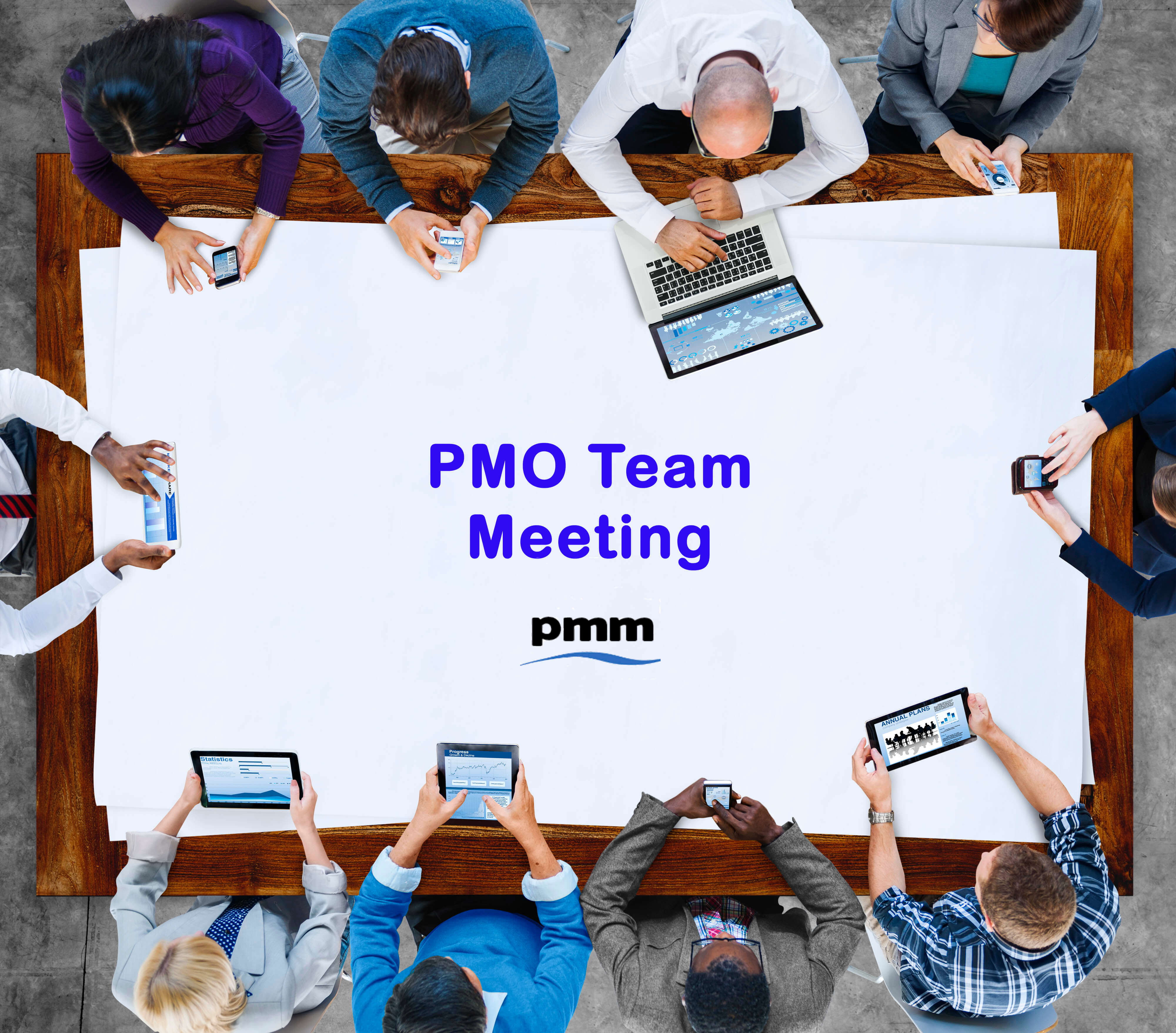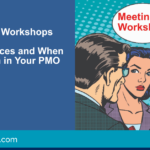If the PMO you have built (or are building) has more than just yourself, you will need to make sure that your are communicating effectively as a team.
With modern technology, we are lucky that there are multiple channels to communicate globally by telephone, text message (SMS), e-mail, instant messaging, intranet, social media, reports, video conference to name just a few. All of these methods can add benefit (when used correctly) and should be used. However, do not dismiss the need to have a regular PMO team meeting.
Purpose
Firstly the PMO meeting needs some ground rules. In fact every meeting needs ground rules. By this I mean a meeting needs to have a purposes as to why it exists. Over the years I have seen so many meetings held for the sake of holding a meeting because people think they should.
The problem with this is that the meetings tend not to achieve much, attendees see them as a waste of time, leading to non-attendance. Next time you are in a meeting, stop to think how many people are in the room, on the phone or VC and calculate the approx. cost to the organisation. Holding meetings that are not needed is wasting the organisations money!
So before you go ahead and set-up all of the PMO meetings, spend some time defining 4 – 6 clear objectives and responsibilities for the meeting. Review these with other PMO members and perhaps the PMO Sponsor. If they are clear and worthy, you should get a positive reaction.
Make sure that you document the objectives and responsibilities in a brief terms of reference. By brief I mean in clear bullets that will go on a single slide.
Logistics
Spend some time considering the frequency and duration of the meeting. Try, where possible to fix the same time and day of the week. Helps people get into a routine.
Define the format of the meeting. Will it be face to face, conference call, VC, etc. The preference should be to hold the meeting face to face with the team members in the room. This helps with building a team. However, this is not always possible, especially with global programmes. If possible, have VC details for the call. This means that the team can see each other.
Attendees
It is important to make sure that you have the right attendees to make the meeting effective. You need the people in the meeting who can make decisions and take on actions.
Make it clear if delegates are acceptable. Consider the nature of the meeting content. Is it sensitive, if so it may not be appropriate to accept delegates.
Avoid inviting people just for the sake of it. Like the meeting having a purpose, everyone who attends needs to have a purpose for being at the meeting – no spectators. Obviously, if you have a PMO of 10 people and 9 need to be there, you may want to invite the 10th person in the interest of team spirit. Just take a sensible approach.
Meeting Terms of Reference
Make sure that for the first meeting that the first slide in the meeting material is the meeting terms of reference. This should include:
- Purpose / Objectives
- Logistics
- Attendees
It is possible to lay out a presentation slide with Purpose and Logistics on the left and Attendees on the right.
As part of the first meeting make sure that the terms of reference is reviewed, any amendments considered and then agreed.
Meeting Agenda
It is vital that there is a clear agenda for every meeting. I would suggest that this should consist of a number of standing agenda items. The agenda should be included in the meeting invite so all attendees are clear on what will be covered and, what they are expected to contribute. People are not happy when they are asked to cover an agenda point when the first they know about it is in the meeting!
A typical PMO meeting agenda should cover:
- Management update
- Project / Workstream status
- Key issues / risks/ challenges
- Cross dependencies
- Resources
The meeting should allow for cross communication of the subtle items that are not within the written status reports. This is important so that all PMO members stay aligned and do not look like they don’t know what each other is doing. Project Managers will use this to create confusion and divert attention from their own progress.
Keep a Record
Make sure that the key actions and decisions from the meeting are captured and that progress against them are tracked. If not, what was the point of the meeting?
Summary
PMO m eetings are vital for building a good PMO team and providing a great platform for communication. However, they must be defined and run properly otherwise they become ineffective and a waste of an organisations time and money. Don’t be afraid to change the meeting format if it is not working and / or the requirements change as the PMO develops.
eetings are vital for building a good PMO team and providing a great platform for communication. However, they must be defined and run properly otherwise they become ineffective and a waste of an organisations time and money. Don’t be afraid to change the meeting format if it is not working and / or the requirements change as the PMO develops.
When you have the PMO meeting set-up correctly, you can add even more value by helping to ensure that the project team meetings are set-up to be effective!
If you are after meeting agenda and minute templates, you may want to take a look at the Project Templates page.






